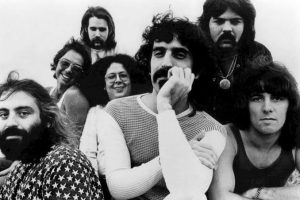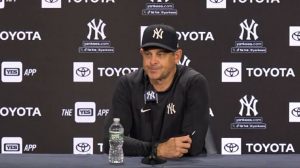
ESPN: Sad News For Sooners As Coach Will Now Join Rival Team For A…
Former Texas, Nebraska and FAU quarterback Casey Thompson committed Thursday to Oklahoma, where he will play his seventh season in college football.
Thompson was a graduate student at FAU this past season playing for coach Tom Herman, who originally signed him at Texas. He played in three games before tearing an ACL and was granted a medical hardship waiver for one more year.
Thompson, the son of former Sooners quarterback Charles Thompson, will return home to Oklahoma where he was a high school star, setting a state record with 12,840 yards of offense and 154 touchdowns. He will be the third player in modern history (joining offensive lineman Paul Moriarty in 1991 and wide receiver Brenen Thompson this spring, both of whom also started out at Texas and transferred to Oklahoma) to have played on both sides of the Red River Rivalry.
Thompson will turn 26 on Oct. 3, nine days before the Sooners and Longhorns meet.
Thompson’s winding path began when he chose Texas because Herman made him a priority, he said. Oklahoma already had a commitment from Cam Rising, who eventually flipped and signed with the Longhorns as well before later transferring and becoming a star at Utah.
Thompson redshirted while backing up Sam Ehlinger his first season, then played in seven games for the Longhorns in 2019 and 2020, including a breakout performance in the Alamo Bowl in the latter. After Ehlinger was injured at halftime with Texas leading 17-10, Thompson came on in relief and threw for 170 yards and four touchdowns to finish off a 55-23 win.
After Herman was fired and Steve Sarkisian took over in 2021, Thompson played in 12 games with 10 starts, throwing for 2,113 yards with 24 touchdowns to nine interceptions. After a 5-7 season, Thompson said he wanted a fresh start, entered the portal and landed at Nebraska.
Thompson started 10 of 12 games for the Huskers in 2022, throwing for 2,407 yards and 17 touchdowns, with five rushing scores. But after Matt Rhule named Jeff Sims the starter, Thompson opted to reunite with Herman at FAU before he was injured.
For his career, Thompson has played in 33 games, completed 63.5% of his passes for 5,338 yards and 52 touchdowns to 24 interceptions.
At Oklahoma he is expected to back up Jackson Arnold, who made his first start in the Alamo Bowl, going 26-of-45 for 361 yards with two touchdowns and three interceptions in a 38-24 loss to Arizona.
What will the Big Ten-SEC partnership look to accomplish?
The most important thing to know about the burgeoning cooperation of the Big Ten and the SEC, announced late last week, is to not call it an alliance. Let alone The Alliance.
The ill-fated — and roundly mocked — conference alliance of August 2021 was a ham-handed move. But most notably, it was the ACC, Pac-12 and Big Ten acting defensively in response to the SEC’s acquisition of Oklahoma and Texas.
This “joint advisory group” announced last week between the Big Ten and the SEC should be viewed more as a bellwether for where college sports are going, and the desire of SEC commissioner Greg Sankey and Big Ten commissioner Tony Petitti to be proactive. It will be a consultant for the two leagues but won’t have the authority to implement changes.
While further details remain unclear, the Big Ten and SEC are sharing ideas to carve a path forward for college sports, something NCAA leadership has failed to do for a generation, capped by the recent flop of the transformation committee.
This isn’t a breakaway, a point Sankey and Petitti have done great gymnastics to point out. It’s rather an arrow pointing toward progress, ranging from micro issues such as squabbles in the College Football Playoff (governance, access and monetary distribution) to larger-scale issues all the way up to Congress.
Here’s what’s definitive about this new linking: These leagues don’t want Eastern Michigan having a say in what happens at Michigan or Florida International affecting Florida. They don’t, for example, want the Dartmouth basketball team’s unionization effort to impact the Auburn and Iowa football teams’ futures.
The SEC and Big Ten are cool on new NCAA president Charlie Baker’s proposal that calls for a new tier of Division I, which includes $30,000 payments to at least half of a school’s athletes and allows schools to make name, image and likeness deals directly with athletes.
One of the reasons the SEC and Big Ten breaking away isn’t rooted in reality comes from the Supreme Court ruling in 2021 in the NCAA v. Alston case. That ruling stresses time and again that conferences are free to forge individual paths forward.
So where could this SEC-Big Ten partnership show up to forge the future of college sports? The simple answers are lawsuit settlement and revenue share.
Multiple sources told ESPN there’s a lot of chatter that this SEC-Big Ten arm-linking could manifest itself amid the thicket of lawsuits facing the NCAA. Some of the wealthiest conferences want to find a way to settle those suits — particularly the billions in potential exposure of House v. NCAA — and use the settlement structure to create a path forward.
This is not simple, nor is it inevitable, as it’s a complicated play that likely would involve Congress. But as one industry source told ESPN on the building settlement chatter: “Congress doesn’t want to save us. They want to help us. There’s a big difference.”
Sources pointed to the House vs. NCAA case, a class-action lawsuit that has the NCAA facing a multibillion-dollar payout in damages to former athletes if a federal judge decides the association’s old prohibition on NIL deals violated federal antitrust laws. That case is scheduled to go to trial in January 2025, but it could be settled before then.
All of the so-called Power 5 conferences — SEC, Big Ten, ACC, Big 12 and Pac-12 — are listed as defendants in the House case, which is part of the reason they could be motivated to settle.
This spring appears to be the optimal window for settling.
The NCAA is also facing two other open antitrust complaints and a federal lawsuit that argues that all college athletes should be considered employees of their schools.
There’s no clean path to a settlement, and the circles around those talks are typically tight. But could the Big Ten and SEC spearheading some type of settlement — perhaps in multiple looming cases — mean they agree to pay some of the past damages and figure out an approved structure to revenue share with athletes going forward?
Other leagues could and will follow along. With revenue sharing with athletes seemingly inevitable at some point, would this be a way to instill it?
Gabe Feldman, director of the Tulane sports law program, warned of myriad complications but acknowledged a potential path through settlement that could create a framework going forward.





